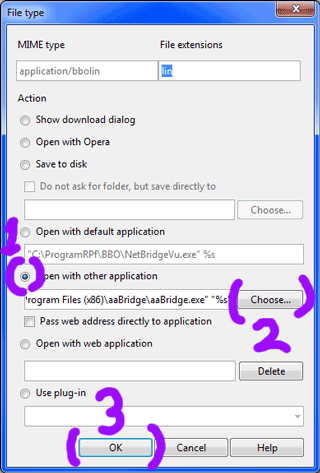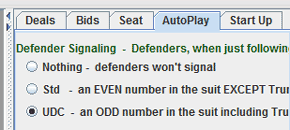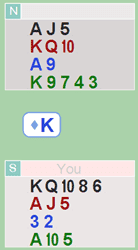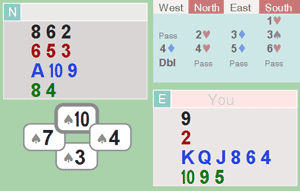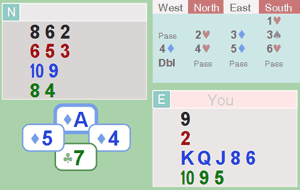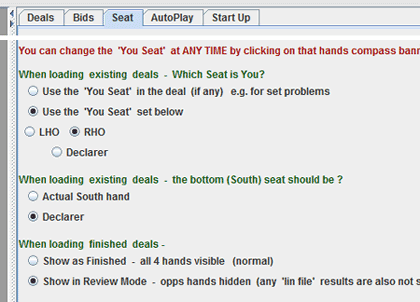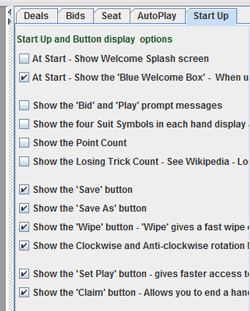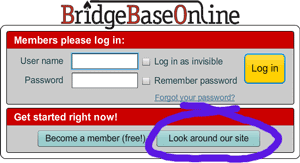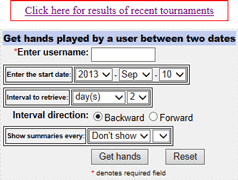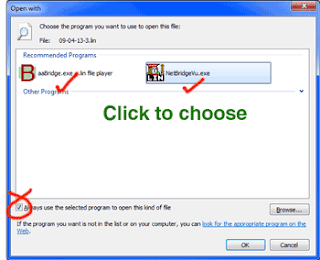The .lin file format is a text based format used to store
bridge deals and their play.
It has long
been the format of choice of BBO (
Bridge Base Online). If there is anyone reading this who hasn't been to
BBO then follow the above link to go there now and open an account.
You can play or just watch Bridge, it's all
free.

BBO provides a web-based client as the main interface to their service.
In addition the Windows-based
client, which installs the
NetBridgeVu.exe application, is still available from their
site.
Anyone who runs a Windows system
and wants to study bridge hands (.lin files) should also install it. Link to
BBO Window's client installer.
Currently BBO offer the last few months worth of played hands as .lin files. See
here. You will need to type in the BBO username of a player whose hands you want to look at. If no player springs to mind try "Chick".
For any particular deal you can click the
Movie link and step through that deal in the web based player OR click the
Lin link, download the .lin file and play it in a 'Bridge Movie' player that runs on your own computer. BBO calls .lin files 'Bridge Movies'. I assume this comes from the fact that you can move backwards and forwards through the play of the hand.
You might like to download a .lin file and look at it in a standard text editor. It's possible to make out what's going on. The hand layouts can normally be spotted as can the bidding and the actual play of the cards.

Another application that can play .lin files is
aaBridge. This free application runs on Windows, Mac and Linux. It can be downloaded from
my bridge site. While there is only one .lin file format, the files themselves tend to fall into three groups.
Type I - A Single Deal
If you download a .lin file from BBO as described above then that is a type I file. It contains a single deal normally with all of the play of that hand.
aaBridge can
also play these files.
Type II - Multiple Deals
These are very like type I except that there are multiple deals in the one file. Windows users who run the NetBridgeVu as their BBO client will find that when they kibitz (watch) any View Graph presentation the app will create a single .lin file containing all of the deals from that session and the play from both the open and closed rooms. This type of .lin file can be replayed with the NetBridgeVu program itself.
aaBridge can
also play these files.
A zip containing two example Type II files can be downloaded
here.
Type III - Complex Tutorials (aka Bridge Movies)
These are normally long complex tutorials with many stages during which a lot of play can be displayed along with questions and answers. Up to now the NetBridgeVu program has been the only
standalone application that can play these files.
aaBridge can
also play these files.
The major source for these 'Tutorial Bridge Movies' is the website of expert bridge player and teacher
hondo717. Howard's site contains a huge number of downloadable type III tutorial .lin files. You do not need to have a lin file player to view his 'Bridge Movies' because all of his lin files can be viewed online with his web-based 'hondoplayer'.
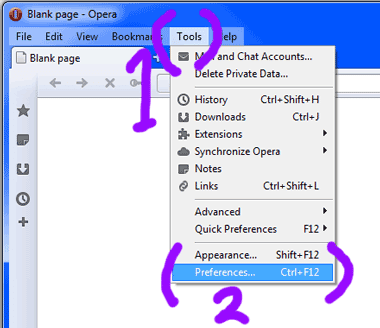 Install both aaBridge and the Opera Browser on your windows pc.
Install both aaBridge and the Opera Browser on your windows pc. 3. Click the Advanced tab
3. Click the Advanced tab